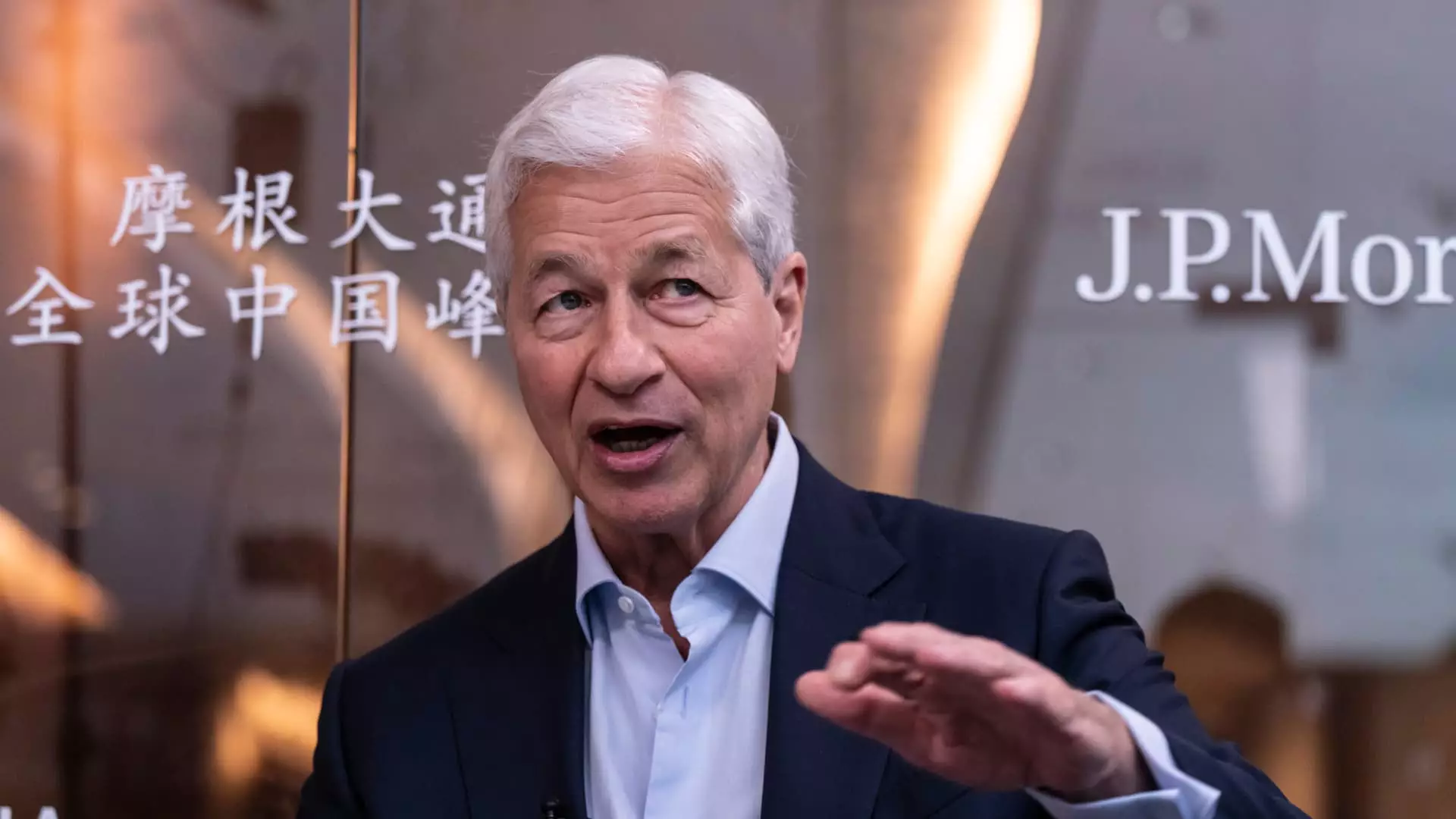Once regarded as a laggard in the online investing sector, JPMorgan Chase has repositioned itself, claiming a new identity as a leader in digital finance. The irony here is palpable; a titan in banking, with its deep-rooted history and vast financial resources, had taken its time catching up in a rapidly evolving online marketplace. Yet, this isn’t merely a tale of newfound ambition—it’s a story of acknowledgment. The announcement of their new tools for researching and purchasing bonds and brokered CDs via their mobile app is a pivotal step towards redefining JPMorgan’s standing in this competitive arena. As the adage goes, “better late than never,” but one cannot help but wonder why such a financial behemoth lagged in digital offerings until now.
Redefining User Experience
JPMorgan’s strategic move to simplify the investment process for fixed income is commendable, but the question begs: will this simplistic approach address the underlying needs of the modern investor? According to Paul Vienick, the head of online investing, the goal was to “make it extremely simple for clients.” However, in a world where complexity meets convenience, one must ponder whether true investor needs can be met with superficial solutions. Simplicity might attract novice investors, but seasoned traders often seek insights and deeper analytics. The investment landscape requires not just accessibility but also a robust suite of tools that provide comparative insights, risk metrics, and real-time data—elements essential for informed decision-making.
Playing Catch-Up in a Competitive Landscape
While it’s heartening that JPMorgan has finally crossed the $100 billion mark in assets under management, this amount pales in comparison to the heftier valuations of industry stalwarts like Charles Schwab and Fidelity. Their market dominance is the result of years of trust-building, technological advancement, and consumer engagement. The late entry of JPMorgan into the fray raises alarming questions about its strategy. The bank’s history with its “You Invest” brand has been tumultuous, illustrating a failure to resonate with self-directed investors. CEO Jamie Dimon’s candid admission that the initial product “wasn’t a very good product yet” is a moment of raw honesty, but it also highlights a stark truth: recognition without execution often leads to missed opportunities in the finance realm.
Turning Ambitions into Actions
The bank’s recruitment of Vienick from TD Ameritrade to overhaul its online offerings indicates a genuine attempt to enhance its standing in wealth management. This strategic decision must yield tangible outcomes to change perceptions and, more importantly, market share. Notably, the assertion that JPMorgan banks half of the affluent households in the U.S. but only captures 10% of their investing dollars is a glaring gap. It’s one thing to have customers in your ecosystem, but capturing their investment potential remains a complex dance of trust, reliability, and effective service delivery.
Adapting to Modern Investor Demands
An intriguing endeavor is JPMorgan’s focus on attracting engaged investors—those who actively research and trade stocks. While the bank’s promotional incentives of up to $700 for moving funds is a shrewd marketing tactic, it raises a fundamental question: what else do they offer beyond monetary incentives? Investors today demand a blend of innovative technology and personalized service. This notion signifies a cultural shift within the traditional banking framework, where consumers not only crave low costs but an enriching experience that stimulates their financial acumen.
The Future: A Trillion-Dollar Business?
JPMorgan’s vision of expanding its self-directed business to a trillion-dollar enterprise requires more than just optimism. As Vienick asserts confidence in the firm’s capabilities, one must question if the company’s existing framework is equipped for this ambition. The inherent advantages of their branch network and senior management’s reputation under Dimon provide a solid foundation; however, it’s the execution of strategy that will determine success. Continuous innovation and customer-centric initiatives are imperative to holding ground against other online brokerages poised for the same opportunity.
The Bottom Line: Can Tradition and Innovation Coexist?
Ultimately, JPMorgan Chase’s endeavor to evolve within the online investing landscape is exceptionally crucial not just for its destiny but for the banking sector as a whole. This journey resonates with larger themes concerning the evolution of financial services in a digital age, where personal finance management meets traditional banking. However, the challenge remains: can a legacy institution successfully meld traditional models with innovative practices to carve out its niche in a market that awaits no one? The forthcoming months will reveal whether JPMorgan can accelerate its pace, redefine investor experience, and truly pivot from being a banking giant to a formidable online investment leader.

